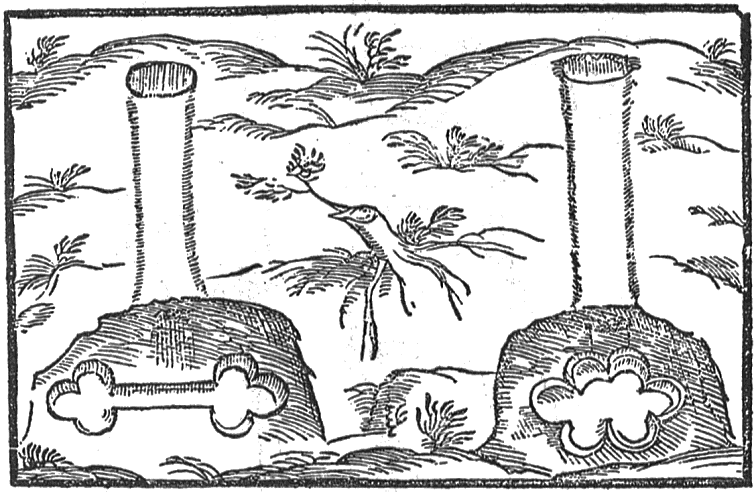The Ancient Deneholes at Tilbury, Essex.—In view of the resumption of explorations in the Chadwell Deneholes, it may be interesting to reproduce the earliest known representation of these mysterious excavations. We quote from Philemon Holland’s translation of Camden’s “Britannia” (1610):—“From the mouth of this Roding, this Tamis hasteneth through a ground lying verie flat and low, and in most places otherwhiles overflowen (whereby are occasioned strong and unholsome vapours exceeding hurtful to the health of the neighbour Inhabitants) to Tilbury: neere unto which there be certaine holes in the rising of a chalky hill, sunke into the ground tenne fathom deepe, the mouth whereof is but narrow, made of stone cunningly wrought, but within they are large and spatious, in this forme, which he that went downe into them described unto me after this manner:—

Of which I haue nothing else to say, but what I haue delivered already” [in his account of “Feuersham” in Kent, as follows:—] “Nigh therereto <sic>, like as elsewhere through this Countie, are found pits of great deapth, which being narrow in the mouth and very spatious beneath, have their certaine distinct rowmes or chambers (as it were) with their severall supporting pillers of chalke. Concerning these there are divers opinions. I for my part, cannot tell what to thinke of them unlesse they were those pits, out of which the Britans in old time digged forth chalke or white marle to dung their grounds withall, as Plinie writeth. For, they found pits, saith he, An hundred foote deepe, streight at the mouth, but of great capacity within; like unto these very same of which we now speake. And verily, nowhere else are they found but in a chalkie and marly soile. Unlesse a man would thinke, that our English-Saxons digged such caves and holes to the same use and purpose as the Germans did, of whom they were descended. For, they were wont as Tacitus writeth, to make holes and caves under ground, and those to charge aloft with great heapes of dung, as harbours of refuge for Winter, and garners of receit for corne; because by such like places they mitigate the rigour of cold wether: and if at any time the enemy commeth, he wasteth only the open ground; but as for those things that lie hidden and buried under the earth, they are either unknowen, or in this respect doe disapoint the enimies, for that they are to be sought for.”